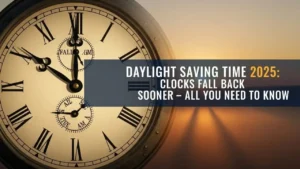A Shift in the Nature of Arrests
Recent records show a significant change in the nature of arrests outside Portland’s federal immigration facility. While earlier protests centered on clashes with law enforcement, recent incidents primarily involve confrontations between protesters and counterprotesters.
Since President Donald Trump’s Sept. 27 announcement to deploy federal troops to Portland, most arrests resulting in charges have stemmed from altercations between opposing groups rather than direct action against police or property.
An Oregonian/OregonLive analysis found that, in the 35 days following the announcement, all but three Portland Police Bureau arrests leading to charges involved physical confrontations between protesters and counterprotesters.
Also Read
Comparing Past and Present Charges
During mid-June, protests at the U.S. Immigration and Customs Enforcement (ICE) facility were far more chaotic. Arrests then included accusations of rock-throwing, shoving officers, and attempting to start fires. In contrast, more recent arrests involve pepper-spraying, punching, and shoving among protesters themselves.
Meanwhile, federal police charges have remained largely unchanged. Most still involve allegations of assault on federal officers, consistent with patterns observed earlier in the year.
Accusations of Bias and the Data Behind It
Federal officials accused Portland police of discriminating against right-wing demonstrators after officers arrested conservative media personality Nick Sortor on Oct. 2. However, arrest records tell a different story — showing more individuals charged for violence against counterprotesters than the reverse.
Out of the arrests that led to charges since late September, counterprotesters were the alleged victims in nine cases, while anti-ICE protesters were listed as victims in six. Three arrests involved no clear victim.
Experts Weigh In
Portland State University lecturer Alexander Reid Ross, an expert on far-right movements, said the surge in conflicts is unsurprising. According to Ross, counterprotesters often fuel tension rather than ease it.
“Counterprotests can actually cause an increase in volatility and violence in situations that would otherwise be under control,” Ross explained. “They often see themselves as heroes or vigilantes but end up increasing the lawlessness.”
Police and Prosecutors Maintain Neutrality
Portland Police Bureau (PPB) officials have emphasized neutrality in handling these events.
“PPB tries not to label people as protesters or counterprotesters, or left-wing and right-wing,” spokesperson Mike Benner said. “We focus on criminal behavior and make arrests only when probable cause is established.”
Multnomah County District Attorney Nathan Vasquez echoed that stance, stating that his office prosecutes based on actions, not ideology.
“We are seeing conflicts between protesters, but we are not tracking political sides,” Vasquez wrote. “These are inner protest conflicts — we are simply trying to maintain peace.”
Arrests and Incidents Since the Troop Announcement
The first arrests following Trump’s announcement involved livestreamer Matthew Cooper, who was allegedly attacked by protesters Nathan McFarland and Eric Sanchez on Sept. 28. Both suspects have been barred from approaching the ICE facility.
A few days later, Sortor was allegedly assaulted by protesters Son Mi Yi and Angella Davis, who were accused of chasing and shoving him. While Sortor was also arrested that night, prosecutors declined to file charges against him.
Other notable incidents include:
-
Oct. 5: Protester Terrell Bouie allegedly dumped urine on conservative livestreamer Rhein Amacher.
-
Oct. 7: Leah Bothamley accused of hitting a counterprotester in the eye with her phone.
-
Oct. 8: Ren Purkerson allegedly pushed counterprotester Harold Smith.
-
Oct. 8: Protester Nathan Kaleel accused of stealing livestreamer Thomas Allen’s tripod and damaging his phone.
-
Oct. 25: Protester Graciella Sobieralski accused of pushing Sortor during a heated interaction.
Sobieralski later told reporters that Sortor’s bright filming light provoked her, and she asked police to intervene before she pushed him.
Allegations Against Counterprotesters
Records also show counterprotesters contributing to tensions near the facility.
Allen, who regularly livestreams near ICE, was arrested Oct. 5 and charged with assault and disorderly conduct after allegedly hitting Bouie, the protester accused of the earlier urine incident.
Another counterprotester, Harold Smith, was arrested twice — once for stealing a protester’s walking stick and again for allegedly punching a woman after being spit on. He defended his actions, saying counterprotesters aim to divert protesters’ attention away from the ICE building.
“They come to harass us because of our flags and loud horns,” Smith said.
On Oct. 18, Mark Lee was charged with assault and harassment after allegedly shoving a woman dressed as a clown. Lee was previously convicted in 2021 for menacing and unlawful weapon use involving an airsoft rifle.
Later incidents include William Napier’s Oct. 23 arrest for allegedly pepper-spraying a woman and Jeremy Wayne Roberts’s Oct. 26 arrest for slapping a protester’s phone hand. Roberts had previously pleaded guilty in connection to the 2021 attack on the Oregon State Capitol.
The Role of Livestreamers
Police have noted that online personalities and livestreamers often heighten tensions rather than being targeted victims.
“We have not found evidence that media or live-streamers are being specifically targeted,” Benner said. “However, many attend these events to create content that rewards intensity and conflict, which can fuel volatile situations.”
Minor Offenses and Remaining Arrests
Only three arrests since Trump’s announcement involved no direct victims. One man was detained for blocking traffic on Oct. 3, and two others were arrested Oct. 25 for repeatedly entering traffic lanes despite police warnings.
Conclusion
The shift in Portland’s protest landscape reveals a new phase of unrest — one less about confrontation with law enforcement and more about clashes between opposing activists. Authorities and researchers agree that ideological polarization, amplified by livestreaming and counterprotesting, has transformed the dynamics outside the ICE facility.
Police and prosecutors continue to assert neutrality, but the data underscores a troubling pattern: escalating hostility within the protest community itself, where both sides increasingly view confrontation as part of their mission.












